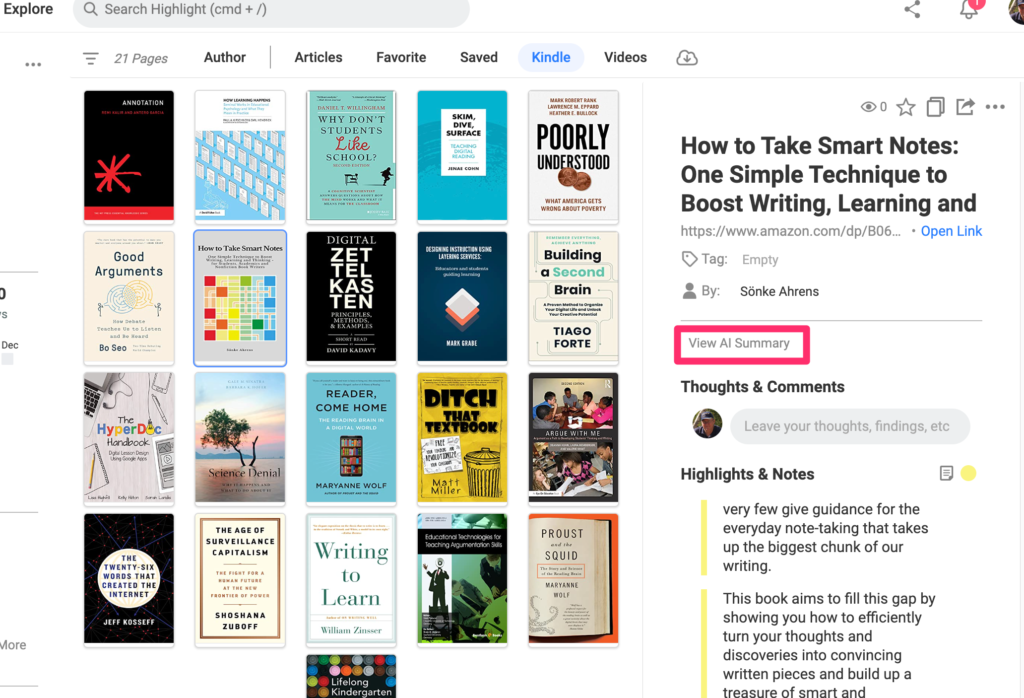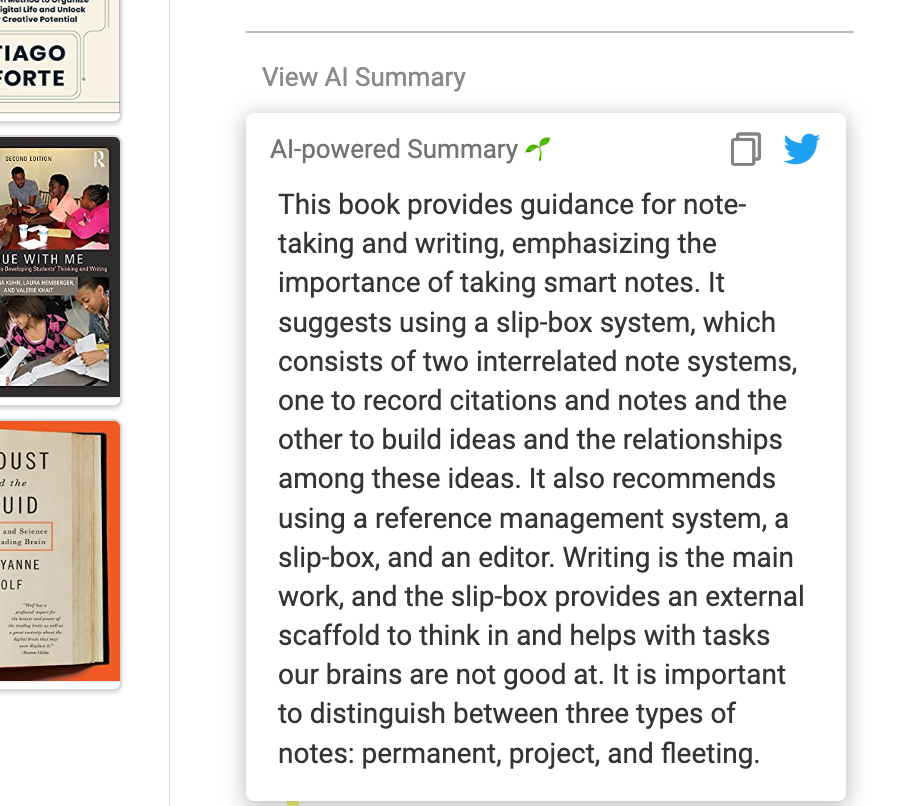Educators need to develop an awareness of the emerging capabilities of AI. I mean this in a couple of ways. First, tech-knowledgeable students are probably already using AI (e.g., using a system that works math problems) and educators should consider the implications. How should these capabilities in the hands of students modify assignments? What type of assignments would encourage productive use? Second, how might educators use AI capabilities themselves to increase efficiency and provide new ways of doing things.
I have been exploring AI capabilities made available through services I use and I intend to share examples as a way to raise.
Example 1: AI summarization in Glasp
Glasp is an online service I use to highlight and annotate online sources and save this content for future use. Glasp includes an AI summarization tool that will generate a summary of the annotations and notes I have taken from a single source. Among the alternatives for what I might do with these summaries is the option of sharing a summary to Twitter (summaries may have to be shortened to meet Twitter requirement for length).
Glasp will also load the annotations and highlights I have added to Kindle books I have read. The AI summary tool can be applied to these highlights and notes. The following image shows a few of the original notes collected for a selected book (Aherns’ Smart Notes) and the link that will trigger the summarization of these notes.

The AI summary takes a few seconds to generate and then is displayed for copying or sharing.

I could use this summary as a starting point for writing my own summary or use as is. What makes this summary different from the summary that Amazon might use to sell the book is that the AI-generated summary is dependent on my own selection of material.
![]()

Pingback: AI and writing to learn | Blurts